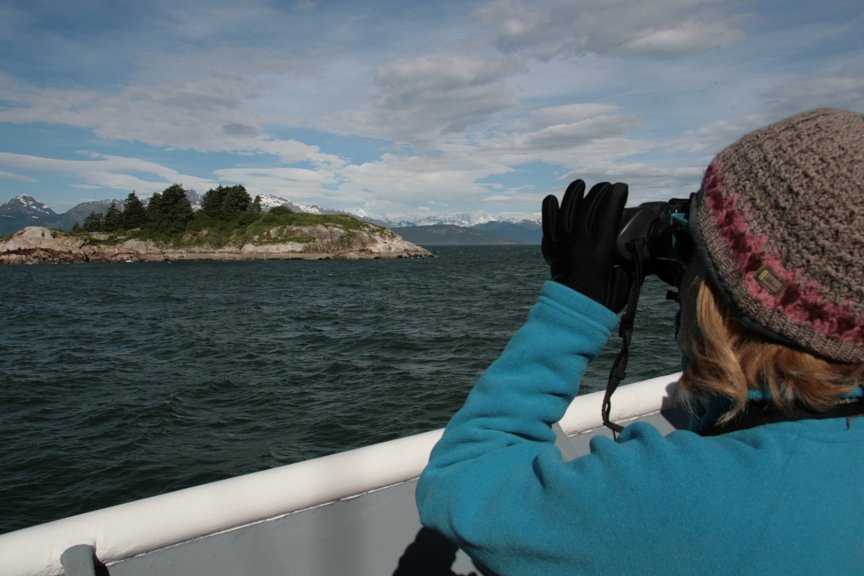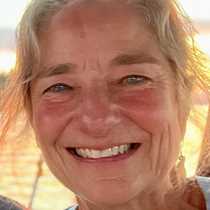Today we are exploring a land and seascape that was buried beneath an immense glacier 250 years ago. When Vancouver was here in 1794, he could go only 5 miles into the bay before encountering a massive wall of ice. John Muir came here 75 years later, and the glacier had retreated nearly 50 miles. Today we will travel beyond that place where John Muir stopped - we’ll cruise 65 miles north into this bay still being shaped by ice. Glacier Bay National Park ranger Nicole is aboard to explain the natural history of this spectacular wilderness. Cultural interpreter Bertha will share stories of her Tlingit family, who had lived in Glacier Bay for countless generations until they were forced to move by the advancing glacier.
Life has returned in abundance to this fresh and wild landscape. At South Marble Island, we watched Steller sea lions resting on low rocks. Flocks of kittiwakes took flight whenever a bald eagle approached their cliff-side nesting colony. Tufted puffins bobbed on the waves, easy to identify with their oversized, orange bills, and long, yellow crest feathers. We found horned puffins, too.
Several mountain goats were on the rocky promontory called Gloomy Knob. In today’s sunshine, some were laying down in the shade of a cottonwood, and two others butted heads.
When we arrived at the face of Margerie and Grand Pacific glaciers, we gathered on the bow, and observed them for several minutes in silence. We heard ‘white thunder’ as the Margerie glacier shifted, and large chunks of ice calved from the glacier. In the midst of these powerful glaciers, we watched a swimming sea otter, and hundreds of kittiwakes feeding at the water’s surface.
After dinner the ship docked in Bartlett Cove, and we walked among spruce trees in the warm evening. Then National Geographic writer (and local resident) Kim Heacox entertained us with stories of his life in Alaska. What a glorious day.







